Dormant Pruning
A question that we arborists commonly hear is: “When is the best time to prune my trees?” I always chuckle at this because to me there is a lot to unpack from this seemingly simple inquiry. There is no hard and fast rule- depending on site conditions, species, and pruning goals (among other factors), the answer can vary wildly. Generally speaking, you can prune whenever you’d like; however, there are bad times and absolutely a best time to prune most plants. Usually that timing would be winter, and we refer to it as dormant pruning.
Dormant pruning refers to pruning a tree/shrub during its most inactive period, and for the Midwest, that is always the winter season. While most trees (with notable exception- I’m looking at you, oaks and elms!) can be pruned during the growing season, there are good reasons to prune during the dormant season.
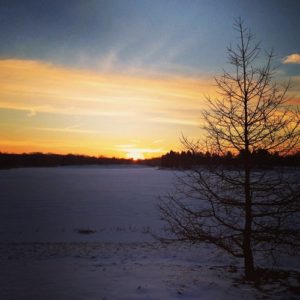
You can readily see the structure of a tree in the winter when leaves aren’t filling out the canopy. This helps when making educated, minimal pruning cuts (and reduces the amount of work you have to do, too!). The strong convergent habit of this larch tree is easily visible.
1. During the winter, you can easily visualize the full structure of the tree. After fall leaf drop, there are no leaves to obscure the upper canopy of branches. This makes it much easier to decide pruning strategy (i.e. which limbs are being crowded) and to easily identify structural defects (like crossing branches, weak branch crotches, and dead/diseased limbs).
2. Contrary to common belief, dead/diseased branches are still easy to identify in the dormant season. While obvious signs of brown leaves may not highlight dead branches, an arborist can look for other cues such as sunken or shriveled branches, missing bark and saprophytic fungi. Leaves that died during the growing season, depending on the reason, also have a tendency to stay attached to the tree through the winter. It’s also easier to identify damage or defects that lead to branch death without leaves obscuring the view.
3. Pruning a tree often necessitates removal of live branches from the canopy. Removing these limbs during the growing season can lead to excessive resource removal. You lose both the limb AND the leaves when pruning just after the tree leafs out/pushes new growth. In the fall, trees pull the nutrient resources from their leaves to store in the root mass for the winter, hence the leaves turning color and dying. If we prune during the dormant period, we can avoid excessive loss of nutrients from the tree, and therefore reduce the amount of stress created when pruning. This is also why Arborists say that pruning in the spring- just after the tree used the stored resources to push new growth- should be done with caution.
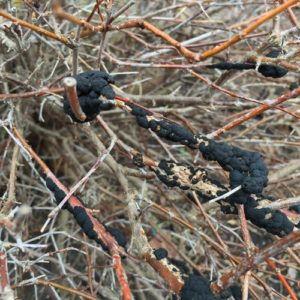
Winter can be a great time to scout for diseases and defects on plants. This black knot, normally obscured by the leaves of the shrub, can be easily spotted during the off-season. In the winter, you can safely prune out this diseased wood without concern of it spreading.
4. Every pruning cut can be thought of as an intentional wound made to a tree. These wounds are openings for diseases (mostly rots) to enter the tree until they callus over. There are no diseases around in the winter to infect trees through new fresh cuts. However, wounds are also subject to extra exposure from the cold temperatures of winter. This is why some more sensitive trees are recommended for pruning in late winter, after the coldest months are in the past. A Nels Johnson arborist can help you determine which trees are more sensitive to winter damage.
5. Similar to the last point, there are several high concern diseases that are moved around (called vectored) by insects during the growing season. These insects are attracted to the sap of the trees they reproduce/feed on, mostly because wounded or stressed trees are easier to inhabit. When pruning cuts are made during the growing season, flowing sap will naturally be extruded from the wound. The two best known diseases that infect through this method are oak wilt and dutch elm disease. This is why it is important to only prune oak and elm trees during the dormant season, when the beetles are absent and sap flow is reduced. This preventative practice is so effective at slowing the spread of disease that some municipalities forbid the pruning of oaks and elms during the growing seasons. Any reputable tree care company in Chicago will not prune oak and elm trees between April 1st and November 1, with deadwood removal and risk mitigation being the exceptions. If you must prune an elm or an oak tree during the growing season, wound dressings are recommended to stop excessive sap flow.
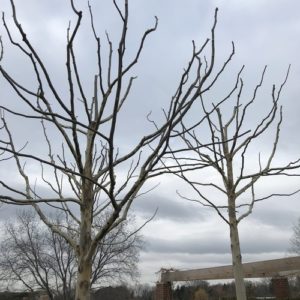
Pruning trees in high traffic areas, or with special needs, can be very difficult during the growing season. These London Plane trees are located in the middle of an outdoor amphitheater, normally packing during warm weather. By pruning in the dormant season, time can be taken to properly pollard the canopies without having to jockey for workspace.
6. An understated benefit for dormant pruning is that winter is when the rest of the landscape is also dormant. The ground is frozen, reducing any soil compaction from large machinery and concern about damaging annual and perennial plantings. Snow gives more flexibility of drop zones for large limbs, and cushions the plant material below. Loud machinery is less of a nuisance when families are bundled up inside staying warm. Additionally, there is less traffic in the landscape with routine mowing and landscape crews, reducing unintended run-ins and scheduling conflicts.
Dormant pruning provides many benefits over in-season pruning, including smaller factors not listed here. With some exceptions, winter pruning can be the best (and least stressful!) time to have your large trees pruned. If you’re interested in having your trees inspected, or are unsure if dormant pruning is right for your landscape, have a Nels Johnson Arborist schedule a site visit today! Give us a call at (847) 475-1877 to schedule an appointment now!
Plant Healthcare and Disease Prevention
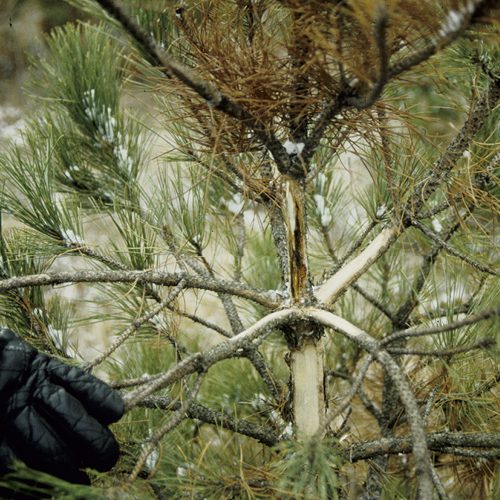
Diplodia Tip Blight
Diplodia tip blight is a fungal disease that kills the tips of the branches of pines, and less frequently spruce and firs. In the blight stage, it can cause severe dieback and the fungus can grow into the stems and main trunk where it becomes a canker disease.
- Where to look: Austrian, ponderosa, mugo, red, and Scots pines
- What to look for: A few brown needles at the tip of the current season’s growth is the first evidence of tip blight.
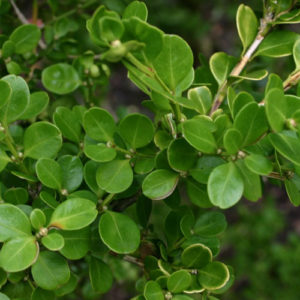
Boxwood Blight
Boxwood blight is a serious fungal disease that kills boxwood trees and shrubs. The blight typically spreads when people acquire infected bushes or trees and then plant them alongside or in place of their existing, healthy boxwoods.
- Where to look: Boxwood
- What to look for: Spotted leaves, stem cankers and defoliation. The spots usually appear as light- or dark-brown, circular lesions that are often surrounded by a large yellow halo.
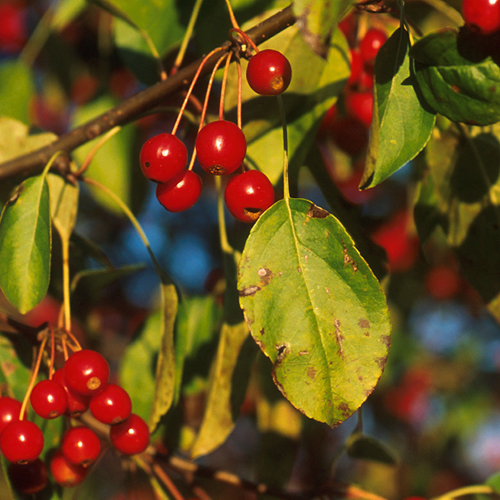
Apple Scab
Apple scab is a disease of apple and ornamental crabapple trees that attacks both leaves and fruit. Severely infected leaves become twisted and puckered and may drop early in the summer.
- Where to look: Apple and crabapple trees
- What to look for: The fungal disease forms pale yellow or olive-green spots on the upper surface of leaves. Dark, velvety spots may appear on the lower surface.
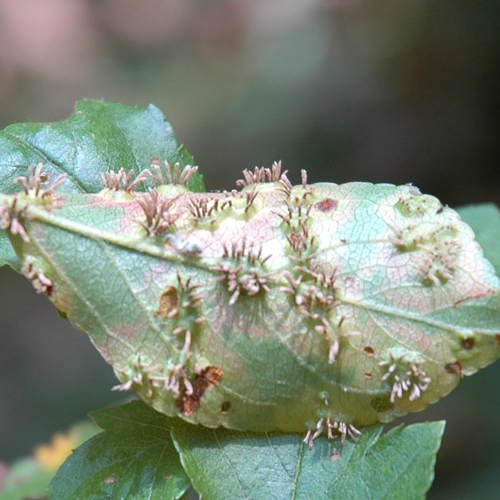
Cedar-apple rust
Cedar-apple rust is a fungal disease that requires juniper plants to complete its complicated two year life-cycle. From year to year, the disease must pass from junipers to apples to junipers again; it cannot spread between apple trees.
- Where to look: Junipers, apple and crabapple trees.
- What to look for: Pale yellow and orange pinhead sized spots on the upper surface of the leaves shortly after bloom. Heavily infected leaves may drop prematurely. Junipers experience large stem cankers that ooze when wet.
Important Questions and Helpful Tips for Selecting and Applying Fungicide
The spring season is a usually frustrating time for farmers and agriculturists.
During this time of the year, erratic temperatures are usually witnessed. This unfavorable temperature condition wreaked havoc on plants, thus, affecting their growth and development. The worst part is that they also aid the development of pest.
Another thing notable during the spring season is an increased amount of rainfall, thus, an increase in the amount of spruce and pine diseases. However, this record high precipitation makes applying foliar fungicides quite difficult.
Choosing and rotating your fungicide of choice can be quite challenging. Nels Johnson Tree Experts, your professional tree and plant health care company, brings you a couple of questions and tips to keep in mind while choosing and applying Fungicide during the spring season.
Helpful Tips for the Application of Fungicide:
Start Applying Foliar Sprays Early
Start applying foliar sprays for anthracnose on plants and trees such maple, ash, and oaks at a very early stage, precisely at a quarter leaf development. When applying treatment for anthracnose, lay more emphasis on the lower two-thirds section of the canopy. This will go a long way in reducing symptoms later during the growing season.
Cover New Growth with Spray
As we enter the growing season, the new growth of conifers will soon become rampant. This infers that the time to spray for botryosphaeria, rhizosphaera, and various other needle diseases will become necessary. For this reason, it is important to pay special attention while applying the spray. Ensure that all new growth getting are completely covered with the fungicide or spray.
Watch out For Lecanium Scale
Another disease that characterizes the spring season is lecanium scale. During the next couple of weeks, begin to watch out for this disease. Fortunately, lecanium scale can be managed by applying Transtect. As a result of the water-soluble nature of Transtect, it is very effective when used as a systemic treatment on scale insects. Transtect penetrates the plant quickly and distributes efficiently, thus, providing the most efficient way to treat scale insects systemically.
Important Questions to Ask When Choosing Your Fungicides:
- Will my work be able to support creating a single spray tank or route by making use of a single material or will do I have to mix different kinds of materials throughout the day?
- Are there buildings, lawns, patios, or other hardscapes which require exceptional care while spraying materials made with copper?
- What is the intensity of the pest infestation or disease on the tree, neighbors, and generally all over the region?
- Will tank mixing a miticide be necessary?
There you have it! The above are some of the questions and helpful tips that need to be considered when selecting and applying a fungicide. Regardless of the type of plant, these questions and tips will guide you in choosing and applying fungicides perfectly.
For more information or professional helpful tips for choosing and applying fungicides for your plants, get in touch with us today at Nels Johnson Tree Experts. Our dedicated team of experts will be available to respond to you and provide a suitable response to your questions and concerns.
- « Previous
- 1
- 2
- 3
- Next »
